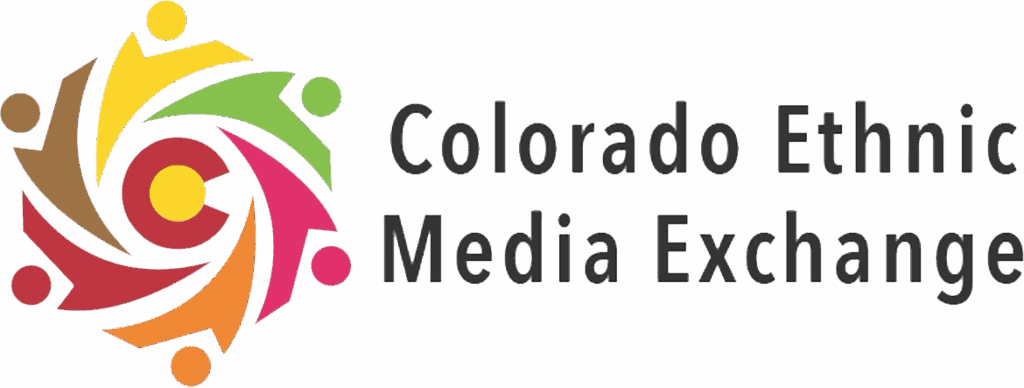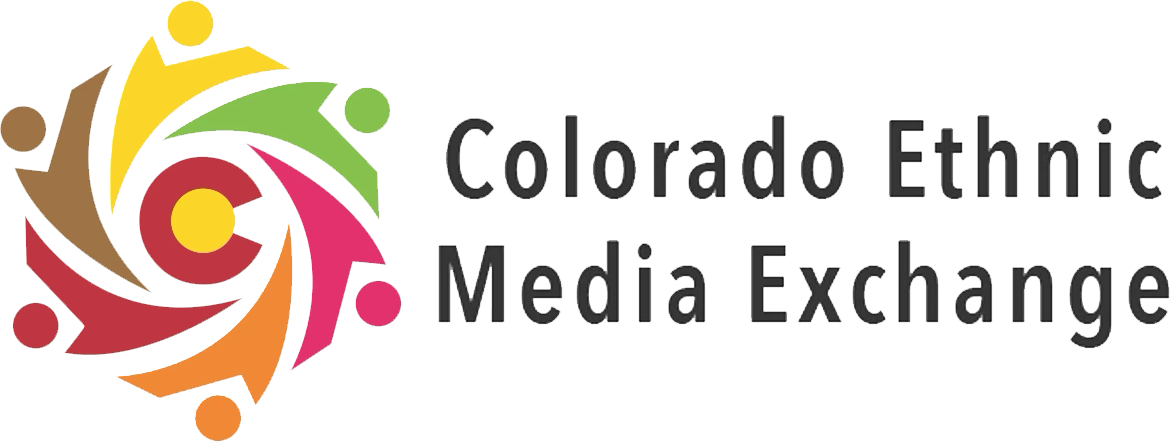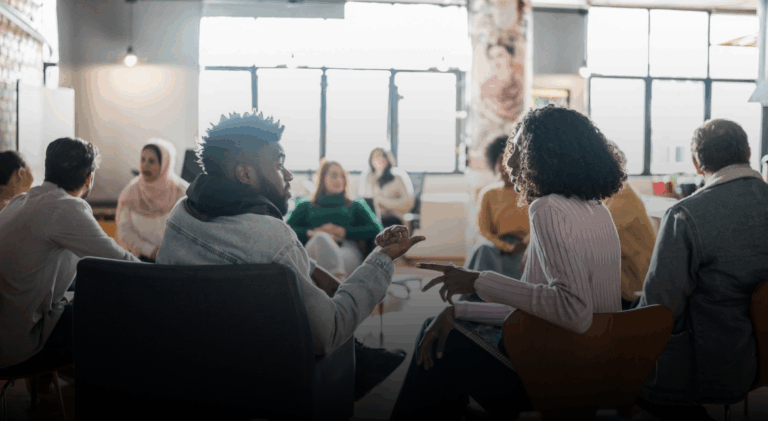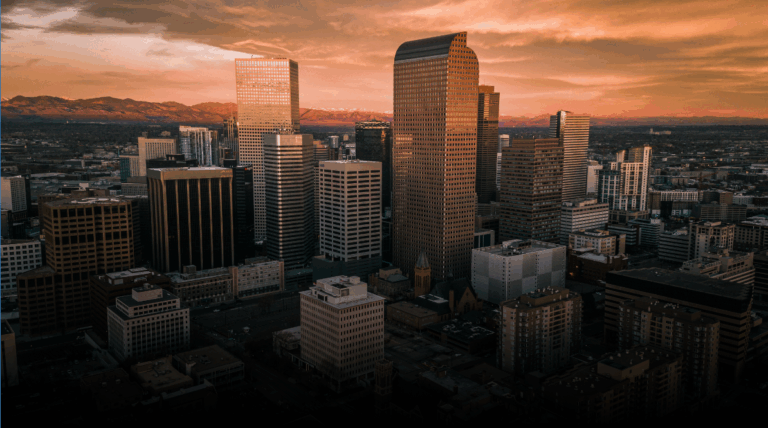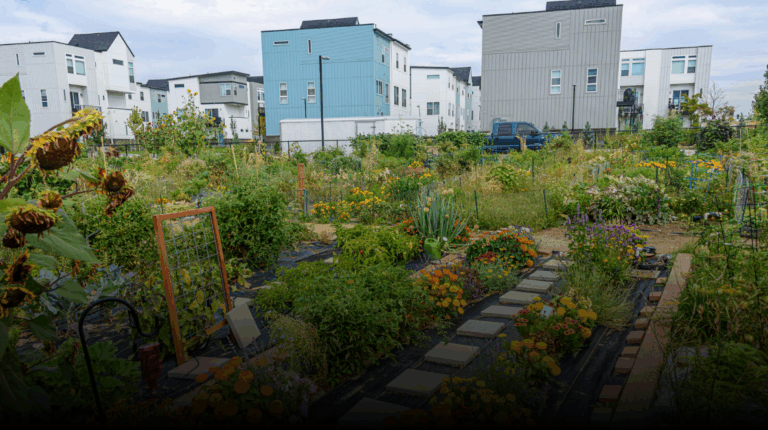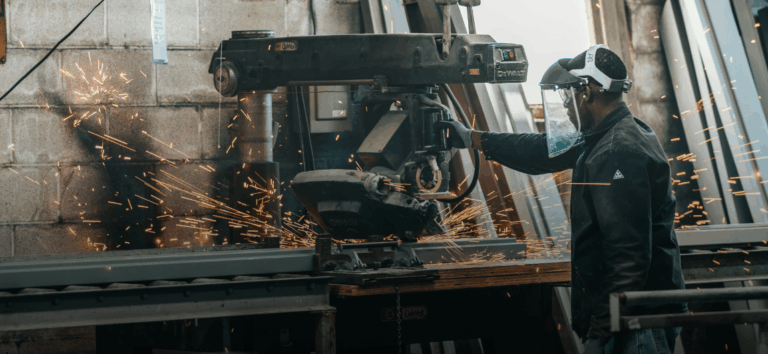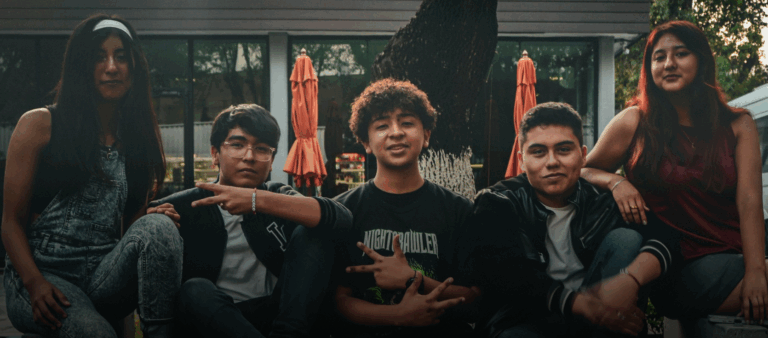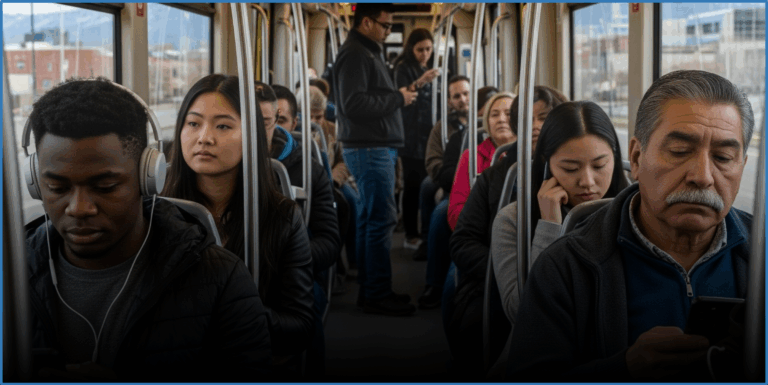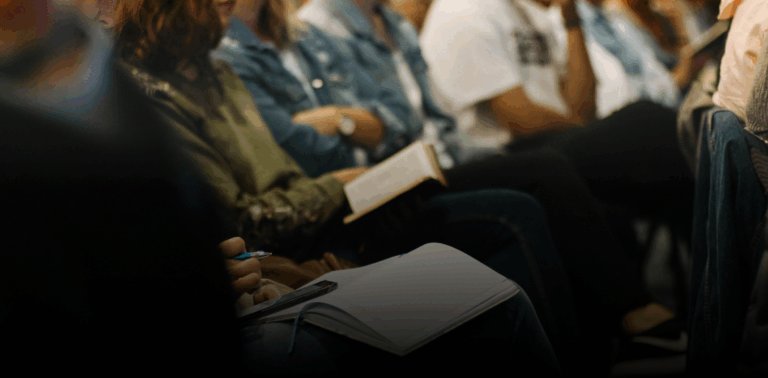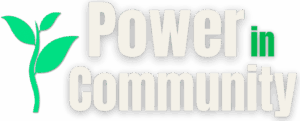
POWER IN COMMUNITY · NO. 2
Who’s in the Room When It Matters?
Here’s how more Coloradans are getting a seat at the table.
You’re a parent in Aurora, grateful for a steady job that helps you make ends meet. Your commute depends on a local bus that links your neighborhood to the main bus line near work. Your child’s daycare is just a short walk from your job.
Then you see a post on Instagram: your bus route is being phased out due to “low ridership.” You panic. A car is out of reach. Moving isn’t possible. The alternate line means pulling your kid from daycare.
The post quotes officials as saying no one objected to the meeting. The meeting? It was held at 10 a.m. on a Tuesday, exactly when many of the people who need that bus are working.
This isn’t a mere hypothetical. Across Colorado, decisions about vital community resources are often made in rooms where the most affected people are left out.
Lack of information and language access are among the systemic barriers that keep people locked out of pathways to power, resources, and representation.
But communities are also striving to gain access to decision-making arenas and the information necessary to voice their needs. Let’s explore real examples of the obstacles they face and some of the breakthroughs occurring in our state.
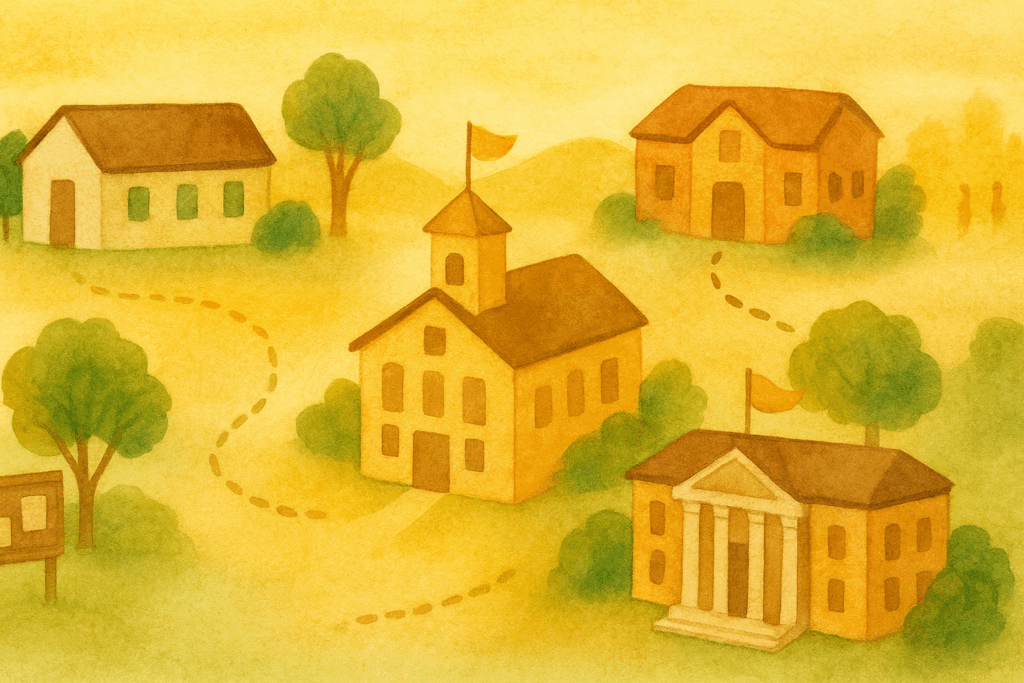
Clearing a Path to Local Power
One of the best ways to impact a community is to get into positions of direct power and influence or have the ability to support community-rooted leaders.
But for many Coloradans, especially those from historically underrepresented communities, the pathway to local leadership excludes them, leading to policies and priorities that don’t address residents’ most serious needs.

We often don't know how these systems work, where we fit in, or how we can influence decision making.
DR. LEO KATTARI,
SENIOR OFFICER FOR PUBLIC OPINION INSIGHTS,
THE COLORADO HEALTH FOUNDATION
“Policymaking, rulemaking, ballot measures, and judiciary systems are super nuanced and complex, and it’s even harder to meaningfully engage in those systems without experience and knowledge,” says Dr. Leo Kattari, senior officer for public opinion insights at The Colorado Health Foundation (CHF). “We often don’t know how these systems work, where we fit in, or how we can influence decision making.”
However, evidence shows that communities benefit when more people opt into power. A 2020 statewide study from Metropolitan State University of Denver found that a more diverse legislature led to more community-centered outreach and a stronger focus on labor rights. The study also found that women and legislators of color were more likely to host public events and sponsor bills that reflected the needs of working families.
“Policymaking, rulemaking, ballot measures, and judiciary systems are super nuanced and complex, and it’s even harder to meaningfully engage in those systems without experience and knowledge,” says Dr. Leo Kattari, senior officer for public opinion insights at The Colorado Health Foundation (CHF). “We often don’t know how these systems work, where we fit in, or how we can influence decision making.”
However, evidence shows that communities benefit when more people opt into power. A 2020 statewide study from Metropolitan State University of Denver found that a more diverse legislature led to more community-centered outreach and a stronger focus on labor rights. The study also found that women and legislators of color were more likely to host public events and sponsor bills that reflected the needs of working families.
Steps Forward: Local Leadership, Made More Possible
Community-led efforts have emerged to position diverse Coloradans for decision-making roles. They’re working to create clearer routes for everyday people to enter civic leadership.
Michael H. Smith, a senior program officer at CHF, highlights one such effort: the Collective Leadership Initiative, a program that “bridges [grassroots] actors to the skills needed to build public policy agendas for their communities,” he says.
Designed for Coloradans of color, low-income residents, and those from rural areas, it provides tools to find effective ways to create lasting change in the face of the very types of systemic issues we’ve been discussing in this series.
Crucially, it aims to remove key barriers for people to take advantage of its resources: the program is free for participants and offers support like Spanish interpretation.
STEPS YOU CAN TAKE
- Start local, learn how things work: Pick an issue you care about (like parks or schools). Find the local board or council that makes decisions about it. Attend or watch a meeting to see the process firsthand.
- Your life is your expertise: Your experience with how systems work (or don’t) is valuable knowledge policymakers need. Share your story. Doing so helps them create better solutions.
- Find your community, team up: Look for local groups already working on your issues. Joining provides support, shared knowledge, a stronger collective voice for change, and strength in numbers.
- Know it will take persistence: Finding information can be confusing, especially with language or access barriers. Connect with local community organizations; they can help you find answers and support.
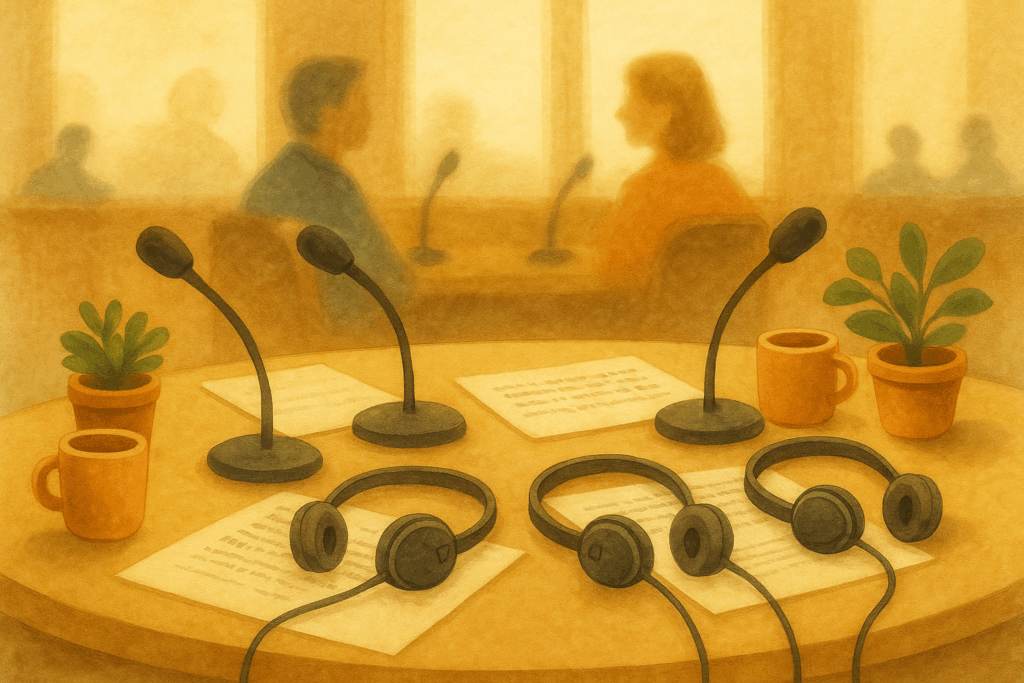
Where Power Speaks Your Language
The reality for too many Coloradans is that public meetings and other venues where plans and decisions are made are conducted in a language they don’t understand.
More than 300,000 Colorado residents, or around 5% of the population, have limited English proficiency. That number has grown 20% since 2020. Yet many public meetings and government communications are still conducted only in English, and nearly all state agencies surveyed said they want more state support to meet residents’ language access needs.
Language access is the first rung on the ladder of participation. If you can’t understand what’s being decided, you’re blocked from every step after that. Moreover, a lack of language access deprives entire communities of non-English speakers’ participation, ideas, talents, and innovation.
Steps Forward: Changing Who Gets Heard
The Community Language Cooperative (CLC) began in Southwest Denver when a group of Spanish-speaking neighbors decided it was time to flip the script. Tired of being sidelined in meetings with city officials, they asked the English speakers to wear translation headsets. For once, they would lead the discussion in their language.
That moment sparked a broader movement rooted in language justice, or the idea that inclusion doesn’t start when someone translates your words, but when you’re free to speak in the language that holds your power, your nuance, and your whole self—“the language of your heart,” as Smith puts it.
Since then, the CLC has worked with organizations across the state to provide real-time interpretation, train public servants, and reimagine civic spaces so that linguistically diverse communities aren’t just heard but are also heeded.
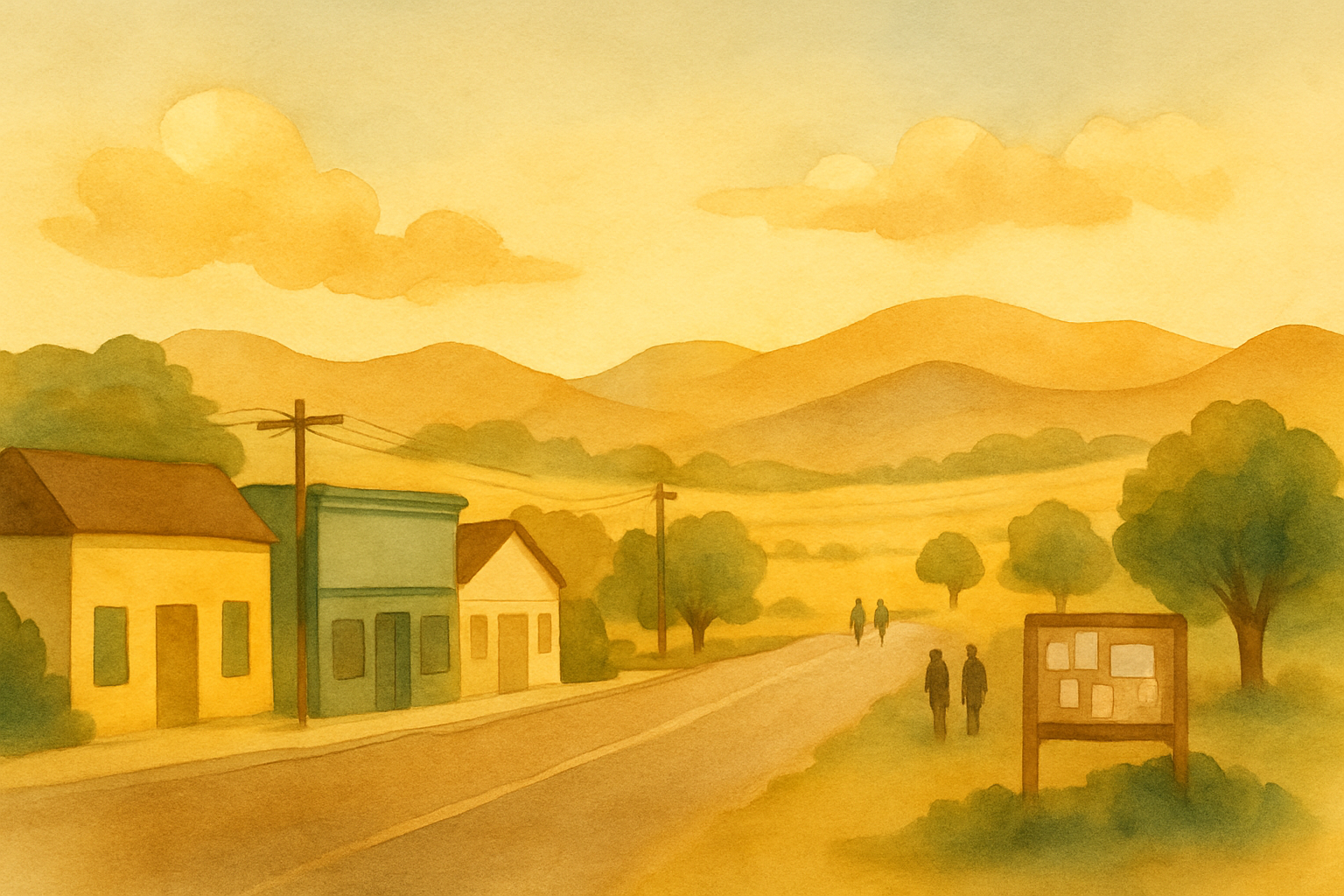
Bringing Power Closer to Home
Despite the vastness of Colorado’s rural landscapes, political and economic influence is primarily located in and around our major cities.
This geographic reality means that decisions affecting rural communities are often made at a distance that “makes state-level action so much harder” for rural residents to engage in, says Smith. Policies developed in this way, frequently without a full grasp of local conditions, can be less effective or even a hindrance on the ground. In some areas, limited broadband access means even virtual public meetings remain out of reach.
These challenges are made worse by overlapping disparities tied to identity. For example, rural residents who are American Indian/Alaska Native or Latino face worse health outcomes, and LGBTQ+ young people in rural areas struggle more with mental health.
Steps Forward: Local Strength, Activated
Even in the face of these barriers, rural Coloradans are finding ways to build power and strengthen their communities. Initiatives like Colorado State University’s Rural Action Project support this vital work. The program helps residents identify their most pressing local needs and provides the structure and support to lead collaborative projects that address them.
In Garfield County, for example, participants in the initiative chose to tackle local health needs by organizing a series of community health fairs. These fairs were community power in action. They brought together more than 100 residents across the county and showed what’s possible when local leadership is enabled and activated.
When Community Takes the Lead
Let’s revisit our imaginary parent—the one who found out on Instagram that her bus to work was on the chopping block.
She wasn’t the only one. A few neighbors were in the same bind: parents, elders, folks with medical appointments. One had a cousin with access to a church van. Another had a daughter who could build websites. They started texting. Then they started meeting.
With help from a local advocacy non-profit, they designed a neighborhood-run shuttle service to the nearest major bus stop. The church lent the van. The teen built a multilingual sign-up form. Neighbors spread the word door to door. Within weeks, they had a working system.
Then someone mentioned a new community micro-grant program designed for this kind of grassroots action. With support from their advocacy partner, they applied and got funding for gas, maintenance, and a modest driver stipend.
The shuttle didn’t solve everything, but it kept people working, kids in care, and neighbors connected to what they needed. It also gave the neighbors an all-important sense that they could make things happen when they came together. That’s what is possible when community isn’t just where you live, but how you lead.
In an upcoming installment of his series, you’ll learn about the real residents of Clifton, who similarly worked with philanthropic organizations committed to supporting grassroots action, including CHF, to bring much-needed amenities to their community.
Want In? Here’s Where to Start
Participation is a form of infrastructure. When it’s weak, what’s built on top of it is unstable. When it’s strong, systems improve, and the people most impacted begin to shape those systems themselves.
“There’s often a disconnect between us as regular residents of Colorado and the people in elected positions,” says Dr. Kattari. “But those officials are just residents of Colorado who were elected into their roles. You and I can be those people, too.”
Civic participation is teachable, buildable, and shareable, and you don’t need a law degree or political connections to start. So, what can you do to participate in this movement towards greater community power? Here are a few ways to plug in.
- Start by listening. Sign up for city council, school board, or planning committee updates.
- Collective Leadership Initiative holds application workshops most Fridays at noon via Zoom. Learn more here.
- Community Language Cooperative offers language justice training. Head to their website to sign up for more information.
- CHF’s Community-Initiated Solutions grants support community-led efforts to tackle local health challenges. Applications for 2025 are open through July 15, 2025. Proposals must be submitted or sponsored by a non-profit organization. Learn more here.
The Power in Community series is presented by The Colorado Health Foundation, working statewide to improve the health of Coloradans through community-informed investments and policy change. Learn more at coloradohealth.org.
Distributed by the Colorado Ethnic Media Exchange, a statewide network of newsrooms serving Colorado’s diverse communities and advancing equitable representation in media. Produced by Angle Content & Strategy, which builds mission-aligned content, tools, and partnerships that grow community agency.
About this article: All editorial decisions, reporting, and writing were carried out by human beings. Spanish-language versions were first translated using ChatGPT (OpenAI) and then reviewed and refined by a professional bilingual editor.
All inline illustrations were created using ChatGPT. The featured image was sourced from Unsplash. Image credit: @smallgroupnetwork.
